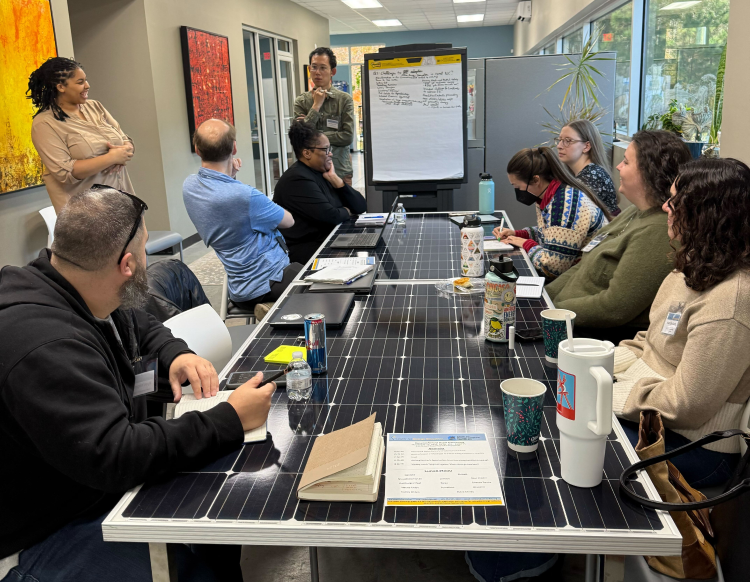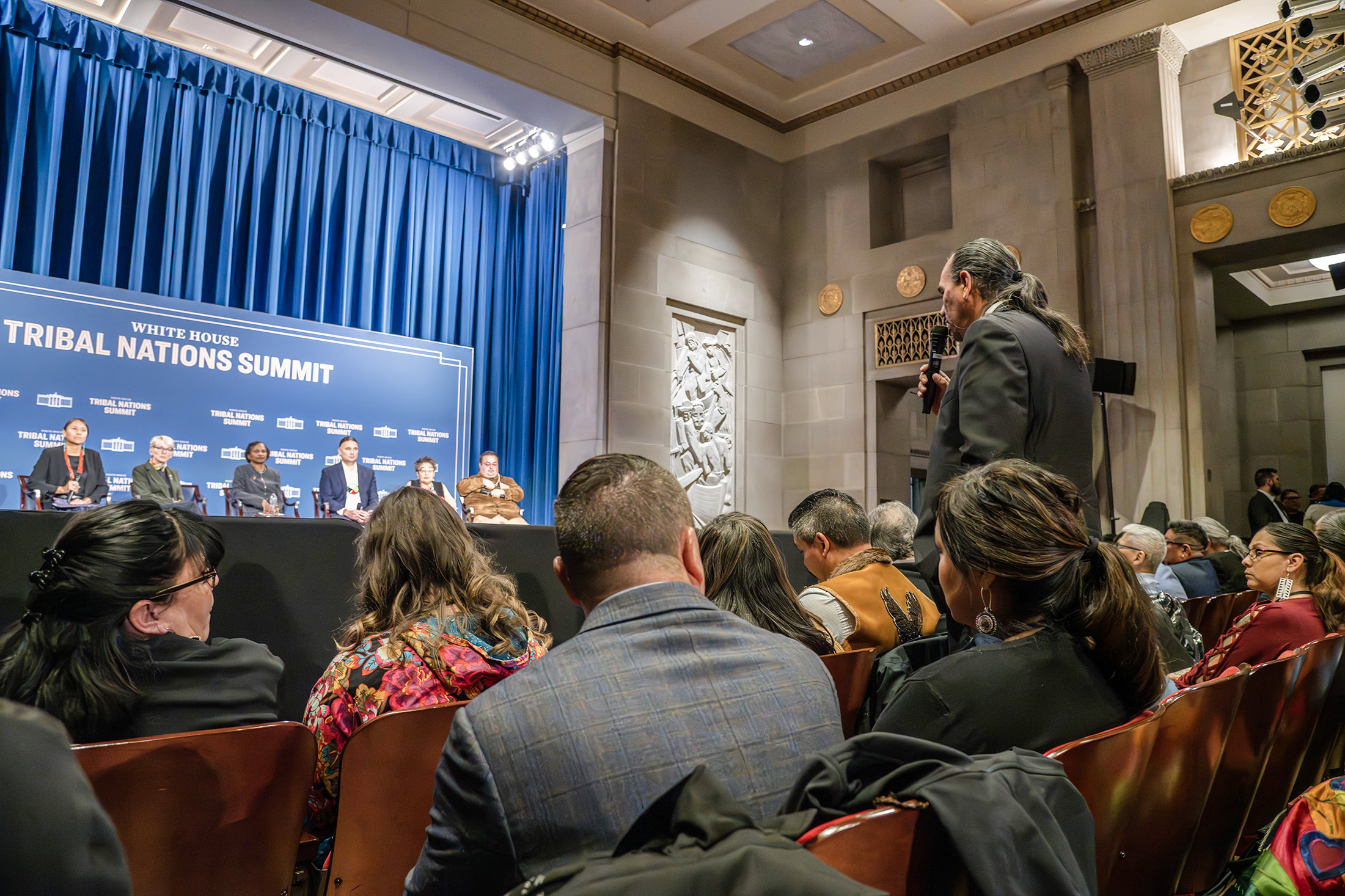This post was originally published on Legal Planet. Reprinted with permission.
In 2025, President Donald Trump rolled out new initiatives at a dizzying rate. That story, in one form or another, dominated the news. This year, much of the news will again be about Trump, but he will have less control of the narrative. Legal and political responses to Trump will play a greater role, as will economic developments. Trump’s anti-environmental crusade may run into strong headwinds.
The Supreme Court and presidential power. The Court’s first new major opinion on presidential power will be the tariff case. The oral argument suggested there could be five votes against the tariffs and possibly even six. The justices will also be faced with other cases testing some of Trump’s most aggressive actions. The tariff case is just one example of the tension for conservative justices between their support for presidential power and their belief that Congress should steer major policy decisions.
The midterm elections. The Democrats came out of last November’s election with some momentum. It remains to be seen whether they can translate that into winning the House or Senate in 2026. If they do, they might act as a check on Trump’s assaults on environmental protection and clean energy. There are some familiar tools for doing so, such as appropriation riders and hearings that publicize administrative lapses.
Rollbacks. The Trump administration began some important rollback efforts, such as repeal of the endangerment finding. Some of those will be finalized this year. The administration has staked a lot on aggressive reinterpretations of statutes while playing fast and loose with normal procedural requirements. We will begin to get a sense this year of how well the rollbacks will play in court. If there are lower court stays, some of the issues might reach the Supreme Court quickly. In the meantime, the administration will continue to roll back protections against pollution, toxic chemicals, and natural destruction.
The grid. The administration has gone all in on expanding generation to power huge new AI centers. At the same time, they’re trying to block use of renewables, the fastest way of expanding the power supply. There are real risks to their approach — notably possible blackouts and big price increases that could spook voters if things go wrong. If the AI boom takes a disappointing turn, that could impact not only these grid issues but the economy more generally.
China. China is already playing a massive role in the energy transition as it churns out solar panels, batteries, and electric vehicles. By default, it is now the biggest presence in international climate policy. It may or may not choose to take advantage of the opportunity. If China does seize this as an opportunity for global leadership, the impact on global climate action will be significant.
The states. Blue states have played an important role in opposing Trump, and we can expect that to continue. They have continued to stand behind their clean energy policies. Gavin Newsom is probably not the only Democratic governor with presidential aspirations. He and others have two goals: winning Democratic primary voters by showing leadership in climate policy and winning general election voters by dealing with energy affordability. These twin incentives should produce some interesting policy initiatives.
A lot will turn on developments in these six areas. They will help determine how much environmental harm results from the Trump administration. That will matter not only for today’s Americans, but for future generations and for people around the world.
Showing 2,932 results

Daniel Farber | January 9, 2026
In 2025, President Donald Trump rolled out new initiatives at a dizzying rate. That story, in one form or another, dominated the news. This year, much of the news will again be about Trump, but he will have less control of the narrative. Legal and political responses to Trump will play a greater role, as will economic developments. Trump’s anti-environmental crusade may run into strong headwinds.

Hannah Wiseman, Seth Blumsack | December 15, 2025
As projections of U.S. electricity demand rise sharply, President Donald Trump is looking to coal – historically a dominant force in the U.S. energy economy – as a key part of the solution. In an April 2025 executive order, for instance, Trump used emergency powers to direct the Department of Energy to order the owners of coal-fired power plants that were slated to be shut down to keep the plants running. But there remain limits to the president’s power to slow the declining use of coal in the U.S.

Daniel Farber | December 11, 2025
A recent U.S. Office of Management and Budget (OMB) memo proclaimed the Trump administration’s commitment to “deregulating at an unprecedented scale.” To advance that agenda, the memo tells agencies to put a thumb on the scale in favor of rollbacks. In contrast, most lawyers and economists would say that regulation and deregulation are subject to the same rules. Sometimes, the conventional wisdom is right.

Madison Condon | December 3, 2025
In Free Gifts, Alyssa Battistoni traces the concept of the “externality” across the past century. This history begins in 1920, when the economist Alfred Pigou observed how private market transactions could impose uncompensated harms on third parties, such that the prices of goods failed to reflect their true (social) cost. Fortunately, he argued, these external costs could be rectified by government intervention: adding a tax equal to the social cost, which would cause market trading to “internalize” the harm and produce the optimum amount of the activity in question. Free-market advocates viewed such externalities as a rare exception to the general rule of the wisdom of the market. As Battistoni describes, however, this would change in the coming decades.

Sophie Loeb | December 2, 2025
On November 13, 20 folks attended the second annual rural clean energy convening in Roanoke Rapids, North Carolina, co-sponsored by the Center for Progressive Reform and the Center for Energy Education. Attendees included academics, energy policy advocates, small-scale developers, technical experts, and government representatives. We built off last year’s convening, addressing the new North Carolina policy landscape and context given the repeal of federal funding, the state’s proposed unfavorable carbon plan, and rising energy burden in communities.

Rachel Mayo | November 25, 2025
This November, we honor the leadership, knowledge, and resilience of America’s first peoples, who have safeguarded the land, water, and air that sustain us all.

Daniel Farber | November 13, 2025
Although Congress vetoed California’s most recent vehicle regulations, the state can pass new regulations so long as there are significant differences from the ones Congress overturned. The Trump administration has been arguing all along that California lacks the power to regulate greenhouse gases from vehicles. Those regulations are a crucial part of the state’s climate policy. Sooner or later, courts will need to decide the extent of California’s legal authority over vehicle emissions. The issues are complex, involving an unusual statutory scheme. Here’s what you need to know, and why I think California should win this fight.

Minor Sinclair | November 12, 2025
After nearly five years of serving this amazing organization and its inspiring community of scholars, advocates, and activists, I’ll be stepping down as executive director of the Center for Progressive Reform.

James Goodwin | October 27, 2025
The current Trump administration has made individualized exceptions and waivers one of the signature features of its governing approach.